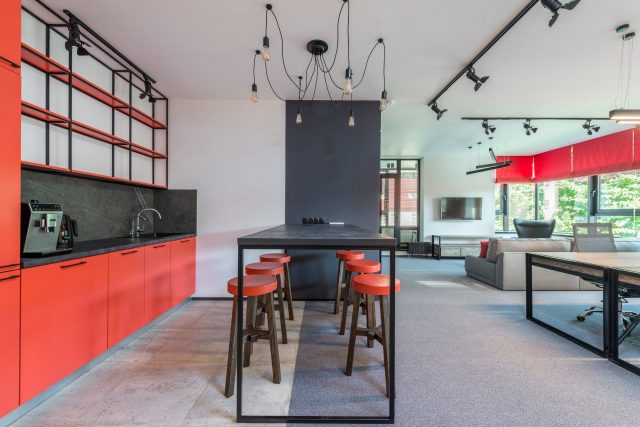Cost of Office Space in San Francisco vs LA Office Rental Prices
Posted on April 22nd, 2024Comparing Office Space Costs: LA vs. San Francisco
Los Angeles and San Francisco are home to some of the largest and most dynamic office space markets on the US West Coast. However, there are important differences in the costs involved in setting up an office in these locations. In this article, we offer a comparative cost analysis of office lease costs between Los Angeles and San Francisco.

Los Angeles: The US creative capital
Being the nation’s creative capital, Los Angeles is a magnet for businesses looking for office space to carry out media, entertainment, design, and advertising activities.
In 2023, the city’s creative industries contributed nearly 15% of the state’s total economic output.
The majority of these businesses are located in downtown LA but also in exclusive hillside and waterfront locations, such as Hollywood, Silicon Beach, the Arts District, Playa Vista, and Burbank.
San Francisco: A global tech city
San Francisco’s business community is known for its strengths in tech and innovation, not only in the nearby Silicon Valley but also in the city’s financial district and SOMA, which are renowned tech powerhouses.
Despite its compact layout, San Francisco is one of the largest US office markets by square footage, offering space in a variety of office unit sizes and locations.
Trends affecting office costs in LA and San Francisco
In Los Angeles, the most notable trend is the surge in demand for flexible and coworking space, driven by a growing startup and freelancer population. The city is home to the second biggest flexible space market in the US. This had repercussions on the conventional office market, given the preference for flexible models and the need to downsize, which has led to record-high vacancies and decreasing rental rates.
In San Francisco and Silicon Valley, the high adoption of hybrid models and demand for satellite offices has caused an exodus from downtown offices, whose base rents have been dropping and becoming more affordable after being one of the most expensive office markets in the US until 2019. Despite this, in comparative terms, San Francisco office space is pricier than space in Los Angeles.
Comparative cost analysis
Let’s move on to a breakdown of the costs involved in leasing office space in Los Angeles and San Francisco.
1. Base Rent
Los Angeles: Average listing rates across the LA metro area are $41 / sq ft for all office building classes. County-wide rates for Class A average $40 / sq ft and $30 / sq ft for Class B space.
In downtown LA, base rent averages $46 / sq ft, although there are noticeable cost disparities between downtown sub-markets, with costs in Little Tokyo staying under $30 but exceeding $50 in the Fashion District.
Outside of downtown LA, the priciest office spaces are in Beverly Hills, Century City, Hollywood, Miracle Mile, and El Segundo, all commanding average rates above $40 / sq ft. The most affordable offices are in Mid Cities, under $30 / sq ft.
San Francisco: Average base rent for San Francisco office space comes in at just under $70 / sq ft for all property classes and $54 / sq ft in the Bay Area. By building class, asking rates across the city are $58 for Class A offices, $46 for Class B, and $39 for Class C. In Silicon Valley, the average base rent is close to $60 / sq ft for Class A offices.
The priciest sub-markets (but still under $100 / sq ft) are Mission Bay, China Basin, the Financial District, and Yerba Buena. The most affordable office rents are in South of Market West and Potrero Hill, both around $50 / sq ft, and are also below average in Van Ness Corridor and Waterfront.
Despite recent rental rate declines, San Francisco remains one of the priciest US markets for large headcount and square footage requirements, and it remains oriented to large corporations.
2. Utilities and Maintenance
The compounding factors affecting operating expenses, like office utilities and maintenance, range from office unit size, lease type, and occupancy numbers to major weather differences between both cities.
In Los Angeles, utility costs for the average small business are around $4.60 / sq ft. On the other hand, the Bay Area generally experiences higher utility costs, in particular electricity, which costs more than 67% than the national average.
3. Taxes and Concessions
Additional costs related to property taxes may be passed to office occupiers, putting additional pressure on budgets. Although there has been a sharp decline in commercial property values in both cities due to work-form-home arrangements, these are more noticeable in San Francisco, which has led to a drop in commercial tax rates.
Concessions and incentives, such as the Tenant Improvement Allowance, can also impact overall lease costs. In Los Angeles, TIA is between $60 and 80 / sq ft, whereas in San Francisco, the average is noticeably lower at $32 / sq ft.
Rent abatements on long-term leases average 10 months in LA vs. 3 months in San Francisco.
Conclusion
Although Los Angeles generally offers more affordable office rental rates, San Francisco provides unparalleled access to a tech and innovation-oriented ecosystem. Businesses must consider their specific needs and growth plans when deciding between these two Californian office markets, to make decisions aligned with their goals and budget requirements.
Take a look at the office space available in Los Angeles and San Francisco.








